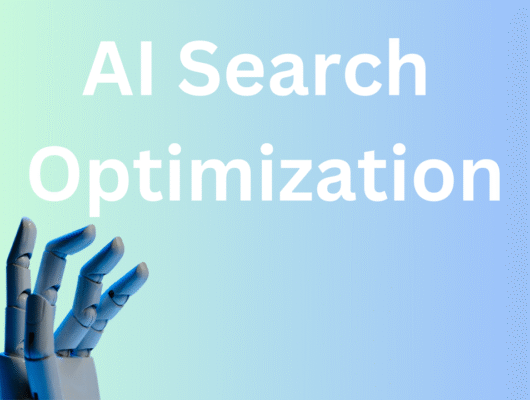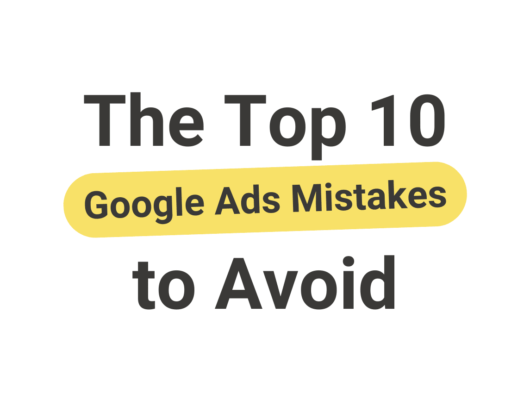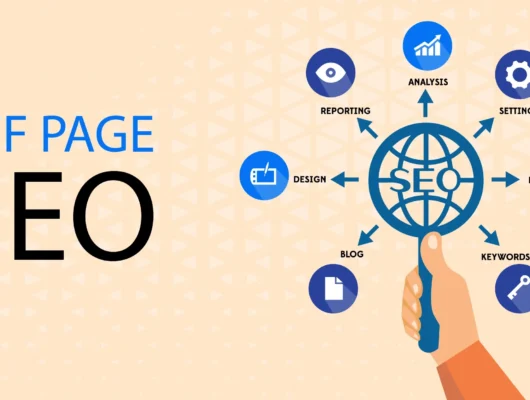Introduction
YouTube Ads 2025, YouTube is no longer just a video-sharing platform—it’s a full-fledged advertising ecosystem where brands, creators, and consumers intersect like never before. With over 2.8 billion monthly active users and a growing audience across smart TVs, mobile, and desktops, YouTube continues to dominate as the world’s second-largest search engine and the top destination for video content.

But what’s even more exciting is how YouTube Ads have evolved. Gone are the days of guessing your audience or relying on basic metrics like views and impressions. In 2025, AI-powered targeting, automated ad creatives, and hyper-personalized video delivery are transforming how brands reach consumers—and how consumers respond.
Whether you’re a tech startup, an e-commerce brand, or an established enterprise, YouTube Ads in 2025 offer unmatched opportunities to increase brand awareness, generate leads, and drive real business results. The question is: Are you using this powerful tool to its full potential?
In this article, we’ll explore everything you need to know about running high-ROI YouTube ad campaigns in 2025—from new ad formats and smart targeting to AI-driven creative tools and performance strategies.
What’s New in YouTube Ads in 2025?
The landscape of YouTube advertising has dramatically transformed in 2025, thanks to rapid advancements in AI, user behavior analytics, and automation. Marketers are no longer limited to broad targeting or generic video ads. Now, with smarter tools and creative possibilities, businesses can connect with the right audience at the right moment—and with the right message.
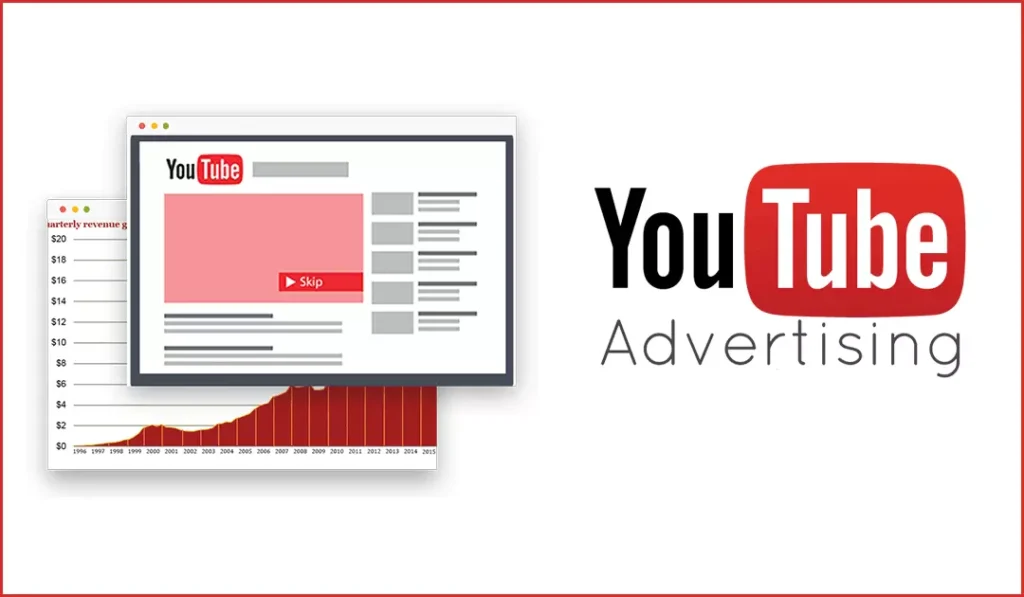
Here’s what’s trending and new in YouTube Ads this year:
1. AI-Powered Creative Generation
YouTube now integrates AI tools that help advertisers automatically generate ad scripts, visuals, voiceovers, and even full video edits. Tools like Google’s Creative Guidance AI analyze past ad performance and suggest creative changes in real-time, helping brands launch high-converting ads faster than ever before.
2. Performance Max + YouTube Integration
Google’s Performance Max campaigns now work more efficiently with YouTube, allowing advertisers to automatically place video ads across YouTube, Gmail, Discover, and Search with AI-optimized targeting and bidding. This ensures maximum visibility while reducing manual setup time.
3. Hyper-Personalized Targeting with Real-Time Signals
Instead of relying solely on demographics or interests, YouTube Ads in 2025 use real-time signals such as search behavior, content preferences, location, and device type to deliver ultra-relevant ads. For example, someone searching “best laptops for coding” on Google might soon see an ad for your IT company’s software development tools on YouTube.
4. YouTube Shorts Ads are Booming
With the rise of short-form content, YouTube Shorts now supports vertical video ads that feel organic and engaging. Brands are using Shorts Ads to tell quick stories, announce product drops, or drive direct engagement—all in under 60 seconds.
5. In-Video Shopping Features
E-commerce and service-based businesses can now link product listings directly within YouTube videos. Viewers can tap on products shown in the video and make purchases without leaving YouTube, shortening the buyer’s journey dramatically.
6. Voice Search & Auto-Transcription Enhancements
As voice search becomes more common on smart TVs and mobile devices, YouTube’s algorithm now factors in spoken keywords in videos. Auto-transcribed audio is also used for ad targeting, making contextual video placement more accurate than ever.
7. Advanced Analytics and Predictive Metrics
Advertisers can now view predictive performance insights such as estimated conversion value, drop-off points, and audience intent before even launching a campaign. These insights allow for more calculated ad planning and smarter budget allocation.
Ad Formats in 2025: What’s Working Best?
With user preferences constantly evolving and mobile content consumption on the rise, YouTube’s ad formats in 2025 have adapted to meet both viewer expectations and advertiser goals. The right ad format can make the difference between a skipped ad and a sale. This year, success is all about delivering the right message, in the right format, to the right audience.
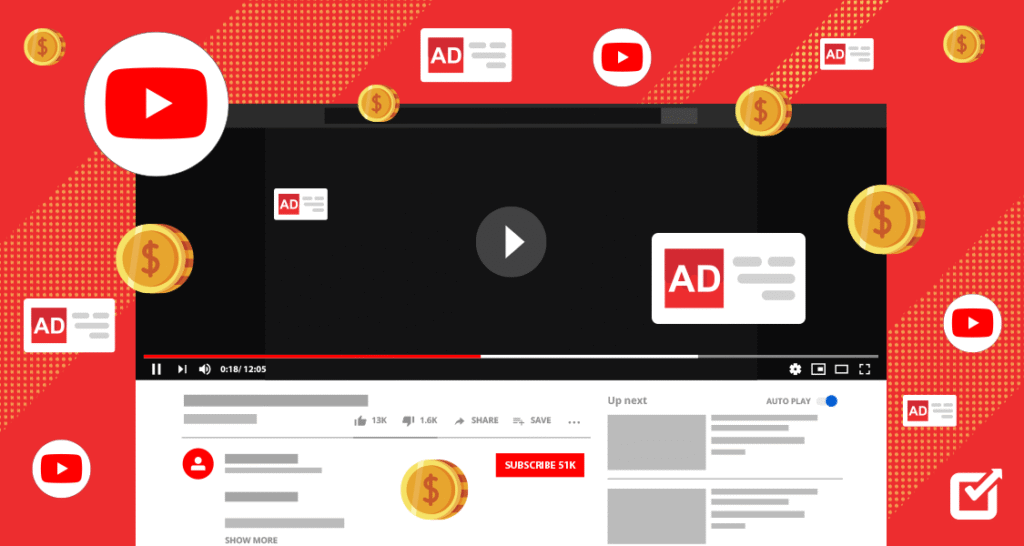
Here’s a breakdown of the top-performing YouTube ad formats in 2025—and how to use them effectively:
1. Skippable In-Stream Ads (Still a Favorite)
These are the classic ads that play before, during, or after a video, with a “Skip Ad” option after 5 seconds. In 2025, they’re more powerful thanks to:
- Smarter placement using real-time intent signals
- Interactive CTAs like forms, product previews, or location finders
- Dynamic creative optimization that tailors visuals and text to each viewer
- Best for: Lead generation, brand awareness, and storytelling
2. Non-Skippable In-Stream Ads (Now More Strategic)
With better targeting and shorter durations (15 seconds or less), non-skippable ads are no longer annoying—they’re mini-brand showcases. Brands are using them for:
- High-impact product launches
- Event promotions
- Building brand recall
- Pro tip: Make the first 3 seconds emotionally compelling or visually bold.
3. Bumper Ads (6-Second Power Plays)
Bumper ads are short, non-skippable ads that deliver a punchy message in just 6 seconds. These work best when you:
- Focus on brand reinforcement
- Use a hook or tagline
- Stack multiple bumpers in a series campaign
- Example: “Fastest hosting in India – Try it FREE today.”
4. YouTube Shorts Ads (Rising Star of 2025)
With over 70 billion daily views on Shorts, vertical video ads are now a must for mobile-first campaigns. These appear in between user-generated Shorts and feel more native when:
- They use music trends and authentic visuals
- Include quick product demos or behind-the-scenes clips
- Offer limited-time deals or calls to swipe up
- Why it works: People engage without feeling interrupted.
5. Shopping Ads in Video
YouTube now allows advertisers to embed product listings directly into ads or videos, making them shoppable in real time. Viewers can:
- Click to learn more
- Add to cart
- Complete checkout without leaving YouTube
- Ideal for: E-commerce, apparel, tech gadgets, home decor, and services
6. Video Action Ads (Smart CTAs for Conversions)
These multi-device responsive ads automatically adjust layouts based on viewer behavior and screen type. In 2025, they include:
- Auto-filled forms
- Click-to-call buttons
- Location pins for stores
Results: Higher conversion rates and lower cost-per-lead (CPL)
YouTube Ads Targeting in 2025: Smarter Than Ever
Targeting has always been the backbone of successful advertising, and in 2025, YouTube Ads targeting capabilities have reached new heights. With the integration of advanced AI and machine learning, advertisers can now reach their ideal audience more precisely and efficiently than ever before.
Here’s how YouTube’s targeting has evolved to help you connect with the right viewers at the perfect time:
1. AI-Driven Audience Segmentation
Gone are the days of manual audience creation based solely on demographics or interests. Now, YouTube uses AI to analyze vast amounts of user data in real-time, including watch history, search queries, and engagement patterns, to build dynamic audience segments tailored to your campaign goals. This means your ads are served to users most likely to engage or convert.
2. Real-Time Contextual Targeting
Instead of just targeting users by who they are, YouTube now factors in what they’re currently watching or searching for, ensuring your ads are contextually relevant. For example, if someone is watching tutorials on cloud computing, your IT service ads related to cloud solutions can appear instantly, increasing the chances of meaningful engagement.
3. Geo-Targeting with Hyper-Localization
YouTube’s advanced geo-targeting lets you deliver ads to specific cities, neighborhoods, or even radius-based locations — perfect for businesses targeting local or regional markets. This feature is enhanced with real-time data such as weather, events, or local trends to further refine ad delivery.
4. Cross-Device and Cross-Platform Targeting
Users switch between devices multiple times a day. YouTube’s targeting algorithms now ensure your ads follow users seamlessly across smartphones, desktops, tablets, and smart TVs, creating a unified advertising experience that reinforces your brand message wherever your audience is.
5. Custom Intent and Life Event Targeting
Advertisers can now target users based on custom intent signals, like recent searches or online behaviors indicating a readiness to purchase or engage. Additionally, life event targeting lets you reach users during significant moments, such as moving homes, starting a new job, or launching a business — prime times to introduce your IT services.
6. Remarketing with Enhanced Precision
Remarketing remains a powerful strategy in 2025, but YouTube has enhanced it with multi-touch attribution and sequential ad delivery, allowing you to nurture leads through tailored messaging at each stage of the buyer’s journey.
7. Privacy-First Targeting Innovations
With evolving privacy regulations, YouTube ensures advertisers can still reach their audience effectively without compromising user privacy. Federated learning and anonymized data sets enable smart targeting while maintaining compliance with global standards.
AI in YouTube Advertising: Game Changer or Overhyped?
Artificial Intelligence (AI) has become the buzzword in digital marketing, and YouTube advertising is no exception. In 2025, AI-powered tools and algorithms have revolutionized how advertisers create, target, and optimize their campaigns. But is AI truly a game changer, or is it just another marketing hype? Let’s explore both sides of the story.
Why AI is a Game Changer
AI has unlocked new possibilities in YouTube advertising that were unimaginable a few years ago:
Automated Creative Generation: AI helps brands generate engaging video content quickly by suggesting scripts, visuals, and editing styles tailored to audience preferences.
Precision Targeting: Machine learning analyzes massive datasets to identify the ideal audience segments in real-time, ensuring your ads reach viewers most likely to convert.
Dynamic Optimization: AI continuously monitors ad performance, automatically adjusting bids, placements, and creative elements to maximize ROI without manual intervention.
Predictive Analytics: Advertisers gain insights into future trends and audience behavior, allowing smarter campaign planning and budget allocation.
In essence, AI saves time, reduces guesswork, and delivers higher-performing campaigns, making it an invaluable asset for marketers.
Why Some Say AI Might Be Overhyped
Despite its benefits, there are valid concerns and limitations around AI in YouTube advertising:
Over-Reliance Risk: Blindly trusting AI without human oversight can lead to missed opportunities or ineffective messaging if the algorithm misinterprets data.
Creativity Constraints: While AI can assist creative processes, it cannot fully replace human intuition, storytelling, and emotional connection that resonate deeply with audiences.
Privacy and Transparency Issues: As AI relies on massive data, concerns about user privacy and how data is used remain critical, impacting targeting accuracy and regulatory compliance.
Cost Barriers for Small Businesses: Some advanced AI tools and features might be expensive or complex for startups and small companies to adopt fully.
The Verdict: A Powerful Tool, Not a Magic Wand
AI is undeniably transforming YouTube advertising in 2025, making campaigns smarter, faster, and more effective. However, it’s not a set-it-and-forget-it solution. The best results come from combining AI’s strengths with human creativity, strategic thinking, and ethical considerations.
For your IT company, embracing AI-driven tools can provide a competitive edge—but ensure your marketing team continuously guides, tests, and refines campaigns to truly harness AI’s potential without falling into common pitfalls.
Key Metrics That Matter Now (Not Just Views!)
In the early days of YouTube advertising, victory was regularly measured basically by the number of sees an advertisement gotten. In any case, as the stage and client behavior have advanced, focusing exclusively on views no longer paints the full picture of campaign viability. In 2025, marketers require to track a assortment of key execution measurements that give more profound bits of knowledge into how advertisements lock in audiences and drive business goals.
Here are the most important measurements to focus on past just views:
1. View-Through Rate (VTR)
VTR measures the rate of watchers who watch your advertisement through to the end or for a critical term (like 30 seconds or more). A higher VTR demonstrates that your content is compelling and important sufficient to hold viewers’ consideration, which is pivotal for brand review and message retention.
2. Engagement Rate
This metric tracks intelligent such as likes, shares, comments, and click-throughs on your advertisements. Engagement signals solid viewer intrigued and makes a difference boost organic reach through YouTube’s algorithm, increasing your campaign affect past paid impressions.
3. Click-Through Rate (CTR)
CTR shows how many watchers clicked on your ad’s call-to-action (CTA) relative to the add up to impressions. A high CTR means your ad’s informing, inventive, and focusing on are adjusted well with the audience’s aim, driving activity to your landing pages or offers.
4. Conversion Rate
This is the extreme measure of success for many advertisers: how many clicks turn into important activities like buys, sign-ups, or request. Following transformations empowers you to calculate ROI and alter campaigns to maximize profitability.
5. Normal Observe Time
Understanding how long viewers spend watching your advertisements makes a difference recognize which inventive components keep consideration and where drop-offs happen. Advertisements with longer normal observe times tend to cultivate more grounded brand partiality and message absorption.
6. Audience Retention and Drop-Off Points
This more profound dive into viewer behavior appears precisely when and where individuals stop watching your advertisement. Analyzing these designs can offer assistance you optimize your narrating and pacing to maintain engagement all through the video.
7. Cost Per Acquisition (CPA) and Cost Per Lead (CPL)
Beyond crude engagement, keeping an eye on how much you spend to obtain a client or lead makes a difference oversee budgets successfully and scale beneficial campaigns.
8. Reach and Frequency
Balancing reach (how many unique users see your advertisement) and recurrence (how regularly they see it) guarantees you construct mindfulness without overpowering your audience, maintaining advertisement viability and dodging weakness.
How to Create a High-Impact YouTube Ad Campaign in 2025
Making a YouTube ad campaign that stands out in 2025 requires more than fair a great video—it requests technique, inventiveness, and exactness. With client consideration ranges contracting and competition developing, it’s crucial to approach each campaign with a organized arrange and imaginative considering. Here’s a step-by-step direct to offer assistance your IT company make high-impact YouTube advertisement campaigns that drive genuine results:
1. Define Your Campaign Objective Clearly
Before making any content, choose what success looks like for you:
- Do you need brand mindfulness or item sales?
- Are you looking to produce leads, drive activity, or boost engagement?
YouTube offers diverse campaign sorts for diverse goals (e.g., changes, website activity, or app introduces), so setting the right objective is the establishment for success.
2. Know Your Audience Deeply
Use YouTube’s advanced focusing on tools to contract in on your perfect viewer:
- Demographics (age, gender, location)
- Interests and behaviors
- Custom aim audiences (based on search behavior)
- Lookalike or retargeting audiences
The more particular your focusing on, the higher your chances of connecting with watchers who really care approximately your item or service.
3. Create Scroll-Stopping, Mobile-First Videos
Your inventive must capture consideration in the to begin with 5 seconds—or hazard being skipped. Tips for 2025:
- Open with bold visuals or provocative questions
- Keep recordings brief, focused, and value-driven
- Use clear branding in the to begin with few seconds
- Design for versatile viewing—vertical or square formats work best
- Include captions for silent autoplay
4. Utilize AI Tools for Scripting and Editing
Leverage AI-powered video creation tools to:
- Generate custom-made video scripts based on audience personas
- Suggest ideal advertisement lengths and formats
- Automatically alter videos with the best-performing elements
AI can essentially decrease generation time whereas boosting imaginative performance.
5. Test Multiple Variations (A/B Testing)
Never depend on one adaptation of an advertisement. Test varieties of:
- Headlines and voiceovers
- CTAs and visuals
- Targeting parameters
Even little changes can lead to major changes in click-through and change rates.
6. Monitor Key Metrics and Optimize in Real-Time
Track execution closely utilizing measurements like:
- View-through rate (VTR)
- Click-through rate (CTR)
- Conversion rate
- Cost per acquisition (CPA)
Use this information to alter bids, targeting, or creatives weekly—or indeed daily—for most extreme ROI.
7. Retarget and Re-Engage
Follow up with viewers who didn’t change over the to begin with time utilizing retargeting advertisements. You can show:
- Testimonials or case studies
- Special offers or limited-time deals
- Product demos or explainer videos
- This keeps your brand best of mind and makes a difference support cold leads into warm prospects.
8. Align With a Full-Funnel Strategy
Integrate your YouTube advertisement campaign into your broader digital marketing funnel. Direct clients from awareness (YouTube advertisement) to thought (landing page) to change (e-mail, chatbot, call-to-action) seamlessly.
Case Study (Optional but Powerful)
- Share how your agency or client ran a successful YouTube ad campaign
- Results before and after
- Tools used
- Lessons learned
Cost & Budgeting: How Much Should You Spend on YouTube Ads in 2025?
One of the most common questions IT businesses ask when considering YouTube advertising is: “What should our budget be?” The answer depends on your goals, target audience, and the ad formats you choose. In 2025, YouTube Ads remain one of the most cost-effective ways to reach highly targeted users—if planned strategically.
What YouTube Ads Cost in 2025 (Average Benchmarks)
YouTube runs on a bidding system through Google Ads, and you typically pay per view, click, or conversion. Here are some average costs in 2025:
Metric Average Cost (2025)
Cost per View (CPV) ₹0.50 to ₹2.00
Cost per Click (CPC) ₹5 to ₹25
Cost per Lead (CPL) ₹100 to ₹800
Daily Budget Starts from ₹500+
Minimum Campaign Spend No strict minimum, but ₹15,000–₹30,000/month is ideal for serious results
Note: Costs can vary based on competition, audience size, and niche (B2B IT services may have higher CPCs).
Factors That Influence Your YouTube Ad Spend
- Ad Format – Skippable in-stream ads are generally cheaper, while non-skippable or bumper ads cost more per impression.
- Targeting Options – Highly specific targeting (e.g., job titles, industries) increases costs but improves relevance and ROI.
- Campaign Objective – A campaign optimized for conversions will often cost more per click than one for impressions or views.
- Video Quality – Higher-quality videos perform better, leading to lower CPV/CPL due to higher engagement.
Budgeting Tips for IT Companies in 2025
Start Small, Scale Fast: Begin with a test budget of ₹10,000–₹20,000 to identify what works before scaling.
Allocate by Funnel Stage:
- Awareness: 40% of budget (branding, explainer videos)
- Consideration: 30% (testimonials, demos)
- Conversion: 30% (retargeting, offers)
- Use Smart Bidding: Let Google’s AI optimize for conversions once you have enough data.
- Retarget Wisely: Reserve 10–15% of your budget for retargeting users who watched your videos but didn’t convert.
What’s a Good ROI in 2025?
An IT company running well-optimized YouTube campaigns can expect:
3–6x Return on Ad Spend (ROAS) for lead-gen campaigns
10–20% conversion rates on landing pages when paired with a strong video funnel
Final Tips & Best Practices
As YouTube proceeds to rule the digital ad scene in 2025, running a high-performing campaign takes more than fair hitting “publish.” Here are a few expert tips and noteworthy best hones to guarantee your YouTube ads stand out, change over, and provide genuine ROI:
1. Hook Viewers in the First 5 Seconds
With the rise of skippable advertisements, the opening seconds of your video are basic. Utilize strong visuals, provocative questions, or high-energy intros to right away capture consideration. Don’t squander time with logos or moderate intros.
2. Focus on One Message Per Video
Avoid cluttering your advertisement with as well many messages. Adhere to one clear goal—whether it’s brand mindfulness, a particular offer, or lead generation—and construct your video around that.
3. Customize Creatives for Each Funnel Stage
Top of Funnel (TOFU): Utilize narrating, humor, or problem-solution formats.
Middle of Funnel (MOFU): Share tributes, demos, or explainers.
Bottom of Funnel (BOFU): Appear verification of results, offer rebates, or issue coordinate CTAs.
4. Use Retargeting to Stay Top of Mind
Don’t let warm leads go cold. Retarget clients who watched your recordings, gone to your website, or locked in with your channel. Serve them more particular, powerful content to drive conversions.
5. Design for Mobile First
Over 70% of YouTube traffic comes from mobile devices. Guarantee your content, visuals, and CTAs are clear and locks in on littler screens.
6. Test and Optimize Continuously
Run A/B tests on:
- Video thumbnails
- Ad scripts and visuals
- Call-to-actions (CTAs)
- Targeting strategies
Let the information direct your decisions—don’t depend on guesswork.
7. Track Real Business Metrics
Don’t fair chase sees. Monitor:
- Conversion Rate
- Cost per Acquisition (CPA)
- Return on Ad Spend (ROAS)
- View-Through Rate (VTR)
These are what matter for long-term success.
8. Use AI—but Keep the Human Touch
AI tools can offer assistance optimize offering, targeting, and indeed scriptwriting, but human imagination and enthusiastic insights are still crucial for building believe and engagement.
9. Stay Updated with YouTube’s Policy Changes
YouTube frequently upgrades its advertisement approaches, particularly around delicate content, audience information, and advertisement straightforwardness. Remain compliant to maintain a strategic distance from sudden campaign disruptions.
10. Invest in Storytelling, Not Just Selling
The most effective YouTube advertisements feel like entertainment—not intrusions. Utilize narrating, humor, feeling, or instruction to make your brand memorable.
Conclusion
YouTube Ads in 2025 are no longer just about visibility—they’re about precision, personalization, and performance. With smarter AI targeting, evolving ad formats, and deeper insights into user behavior, advertisers have more power than ever to connect with their ideal audience and drive measurable results.
Whether you’re an IT company looking to generate high-quality leads or a brand aiming to build authority in your niche, YouTube offers unmatched reach and engagement potential. But to succeed, you need more than just a budget—you need strategy, creativity, and constant optimization.


